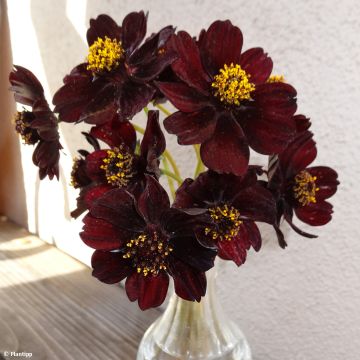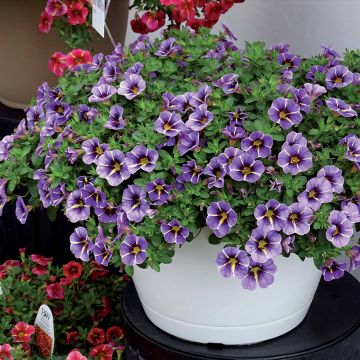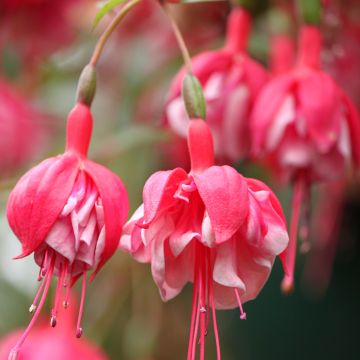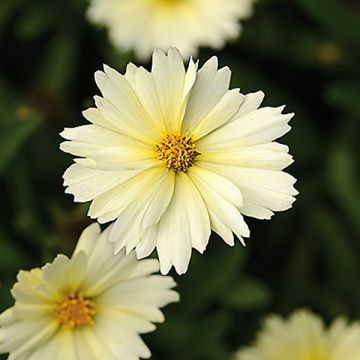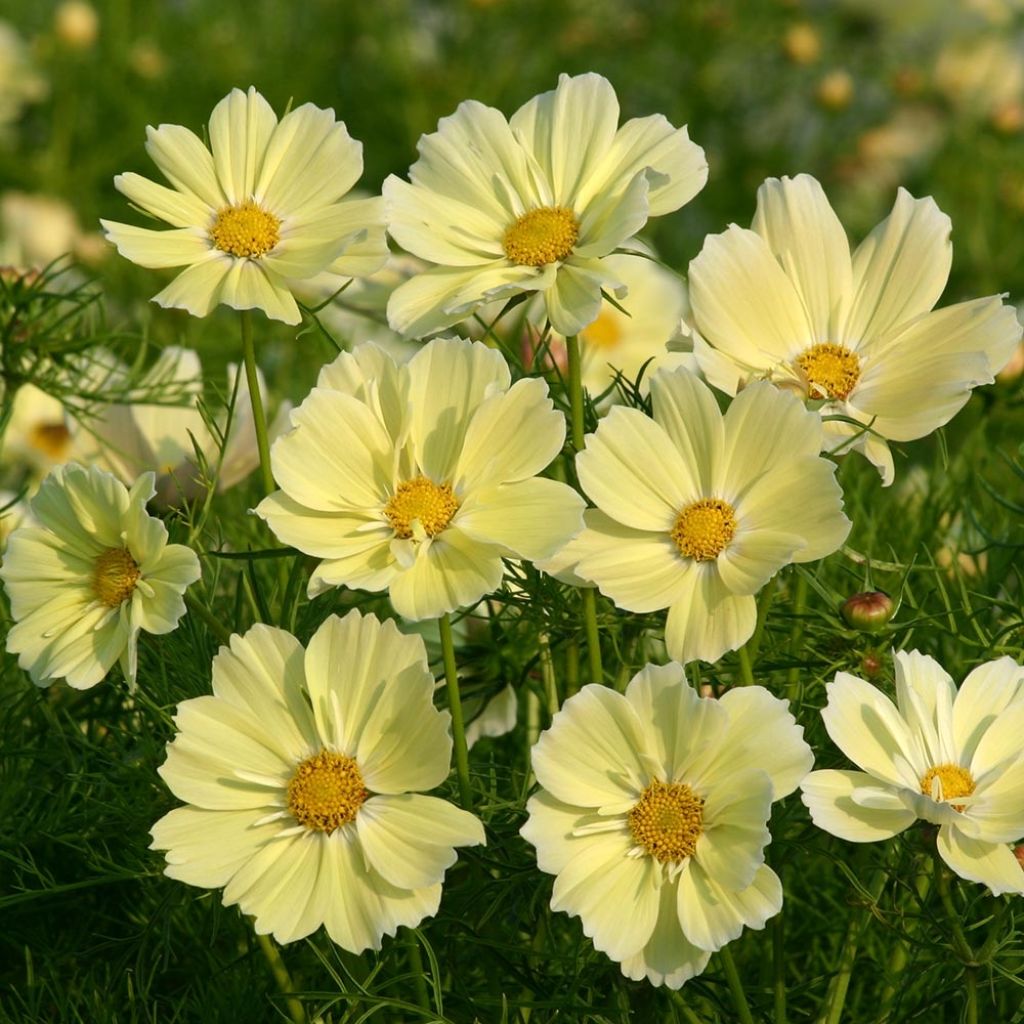

Cosmos Xanthos jaune Mini-mottes
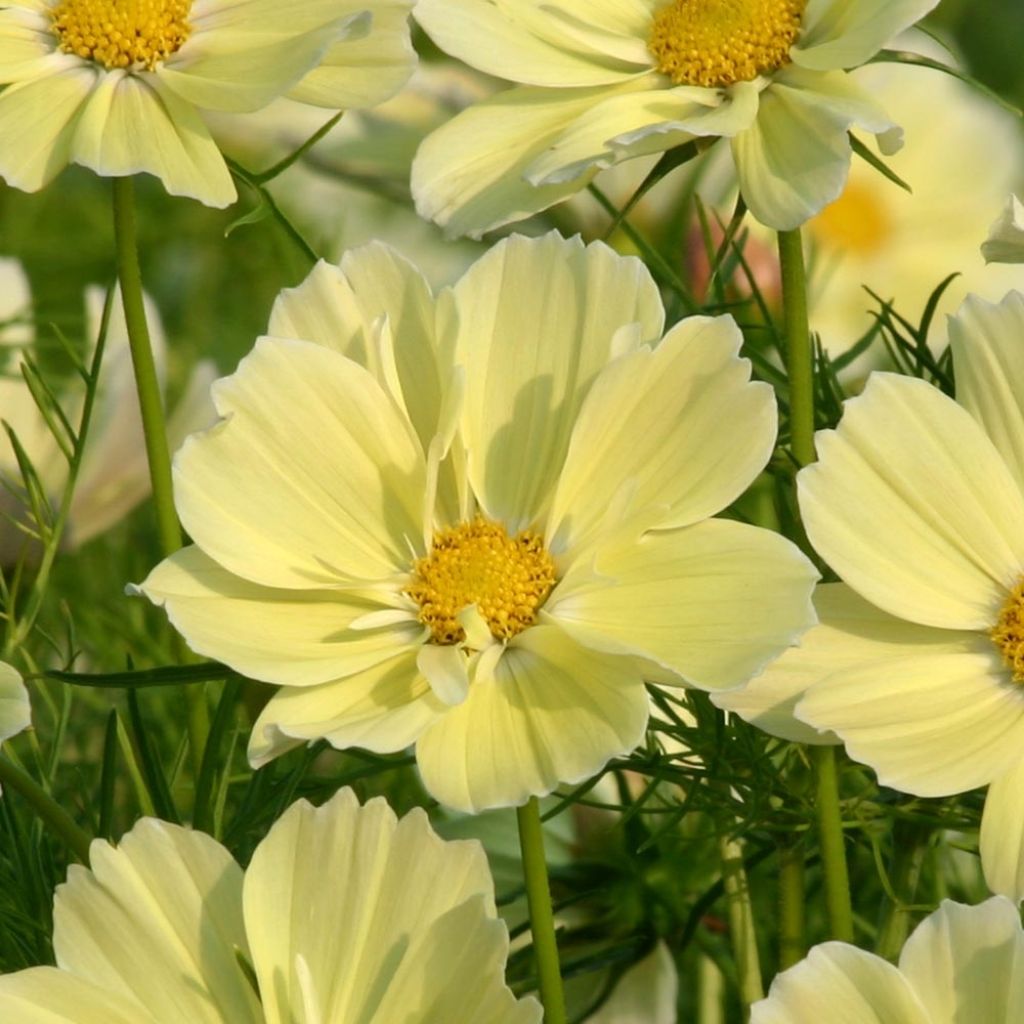

Cosmos Xanthos jaune Mini-mottes


Cosmos Xanthos jaune Mini-mottes
Cosmos bipinnatus Xanthos - Garden Cosmos
Cosmos x bipinnatus Xanthos
Garden Cosmos, Mexican Aster
Out of 16 cosmos, only 7 survived despite intensive care...and out of those 7, only one is yellow, oddly shaped like a pom-pom, and the others are pink...disappointing.
Valérie, 15/06/2025
Special offer!
Receive a €20 voucher for any order over €90 (excluding delivery costs, credit notes, and plastic-free options)!
1- Add your favorite plants to your cart.
2- Once you have reached €90, confirm your order (you can even choose the delivery date!).
3- As soon as your order is shipped, you will receive an email containing your voucher code, valid for 3 months (90 days).
Your voucher is unique and can only be used once, for any order with a minimum value of €20, excluding delivery costs.
Can be combined with other current offers, non-divisible and non-refundable.
Home or relay delivery (depending on size and destination)
Schedule delivery date,
and select date in basket
This plant carries a 6 months recovery warranty
More information
We guarantee the quality of our plants for a full growing cycle, and will replace at our expense any plant that fails to recover under normal climatic and planting conditions.
Would this plant suit my garden?
Set up your Plantfit profile →
Description
The Cosmos bipinnatus 'Xanthos' is a new variety with a compact habit and absolutely delightful pastel yellow flowers, never before seen in the compact varieties available in the market. This annual plant provides abundant flowering for 6 months, until autumn, even in poor and relatively dry soil. Its flowers are carried on sturdy and branched stems, adorned with dark green fennel-like foliage. This plant, which can fit anywhere, will bring a lot of charm and poetry to the late season, in borders, among perennials, and even in containers.
The 'Xanthos' Cosmos is one of the many cultivars of this well-deserved popular annual known as Cosmos bipinnatus. Related to Dahlias, Cosmos belong to the family Asteraceae. They have the characteristic inflorescence in a head, which we call a flower. 'Xanthos' has particularly fine foliage, described as pinnatisect, reminiscent of fennel, and it is slightly and pleasantly scented. This compact variety quickly forms a dense and bushy clump 60 cm (24in) in height, and 40 cm (16in) in width. The early flowering begins in May and lasts until October, only ceasing with the first frost. The heads measure 6 cm (2in) in diameter and are composed of a crown of plicate petals in a very pale yellow, warmed by a slightly deeper yellow at the center of the petals. The center of the head is made up of a small golden disk that turns brown after pollination. The flowers attract many insects and butterflies, including the Monarch.
Capable of filling a container alone from spring until frost, or colonizing a slope, a bed, the 'Xanthos' Cosmos offers an abundance of single flowers with childlike patterns, in an extremely bright colour. Cosmos are flowers made for beginners, almost impossible to fail. These plants bring density to borders and lightness to the heavier flowering of perennials, without succumbing to bad weather. This lovely Xanthos variety can be used in pots on the terrace or balcony, but also in countryside settings, mixed with marigolds and calendulas, cornflowers and grasses like Stipa tenuifolia, white gauras, or among perennials that love the sun as much as it does, bidens and rudbeckias. Its flowers have a very good vase life.
Note: Please be advised that our young plug plants are professional products intended for experienced gardeners; upon receipt, transplant and store them under cover (veranda, greenhouse, cold frame) at a temperature above 14°C (57.2°F) for a few weeks before being placed outdoors once the risk of frost has definitively passed.
Report an error about the product description
Cosmos bipinnatus Xanthos - Garden Cosmos in pictures
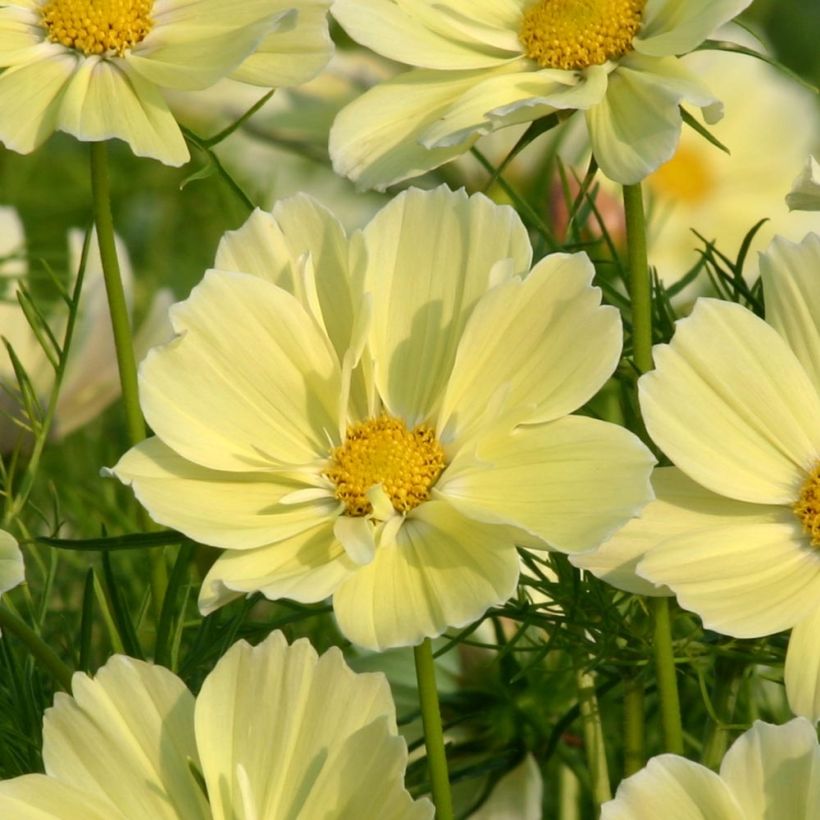

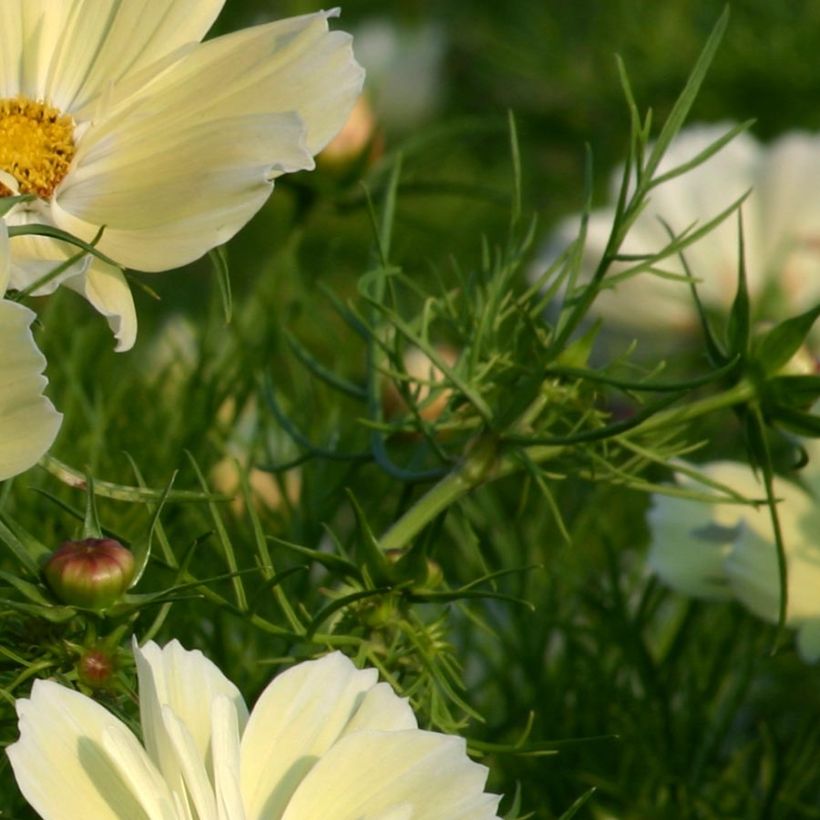

Flowering
Foliage
Plant habit
Botanical data
Cosmos
x bipinnatus
Xanthos
Asteraceae
Garden Cosmos, Mexican Aster
Cultivar or hybrid
Other Cosmos
View all →Planting and care
The 'Xanthos' Cosmos loves the sun and is easy to grow, even in degraded soil. Place it in a moderately fertile neutral soil, cool but well-drained. Plant it in spring, after frost, for flowering from June to October.
Pinch the tips of the shoots on each stem, during transplantation, to encourage branching and the production of numerous flowers. Cosmos prefer full sun, but tolerate partial shade. These plants are drought resistant once established, they are not prone to diseases, but can be targeted by aphids. Spontaneous seedlings are frequent, but not always reliable, without becoming invasive. To prolong flowering, remove faded flowers. Water regularly in case of prolonged drought and possibly mulch to protect from drying out.
Planting period
Intended location
Care
-
, onOrder confirmed
Reply from on Promesse de fleurs
Similar products
Haven't found what you were looking for?
Hardiness is the lowest winter temperature a plant can endure without suffering serious damage or even dying. However, hardiness is affected by location (a sheltered area, such as a patio), protection (winter cover) and soil type (hardiness is improved by well-drained soil).

Photo Sharing Terms & Conditions
In order to encourage gardeners to interact and share their experiences, Promesse de fleurs offers various media enabling content to be uploaded onto its Site - in particular via the ‘Photo sharing’ module.
The User agrees to refrain from:
- Posting any content that is illegal, prejudicial, insulting, racist, inciteful to hatred, revisionist, contrary to public decency, that infringes on privacy or on the privacy rights of third parties, in particular the publicity rights of persons and goods, intellectual property rights, or the right to privacy.
- Submitting content on behalf of a third party;
- Impersonate the identity of a third party and/or publish any personal information about a third party;
In general, the User undertakes to refrain from any unethical behaviour.
All Content (in particular text, comments, files, images, photos, videos, creative works, etc.), which may be subject to property or intellectual property rights, image or other private rights, shall remain the property of the User, subject to the limited rights granted by the terms of the licence granted by Promesse de fleurs as stated below. Users are at liberty to publish or not to publish such Content on the Site, notably via the ‘Photo Sharing’ facility, and accept that this Content shall be made public and freely accessible, notably on the Internet.
Users further acknowledge, undertake to have ,and guarantee that they hold all necessary rights and permissions to publish such material on the Site, in particular with regard to the legislation in force pertaining to any privacy, property, intellectual property, image, or contractual rights, or rights of any other nature. By publishing such Content on the Site, Users acknowledge accepting full liability as publishers of the Content within the meaning of the law, and grant Promesse de fleurs, free of charge, an inclusive, worldwide licence for the said Content for the entire duration of its publication, including all reproduction, representation, up/downloading, displaying, performing, transmission, and storage rights.
Users also grant permission for their name to be linked to the Content and accept that this link may not always be made available.
By engaging in posting material, Users consent to their Content becoming automatically accessible on the Internet, in particular on other sites and/or blogs and/or web pages of the Promesse de fleurs site, including in particular social pages and the Promesse de fleurs catalogue.
Users may secure the removal of entrusted content free of charge by issuing a simple request via our contact form.
The flowering period indicated on our website applies to countries and regions located in USDA zone 8 (France, the United Kingdom, Ireland, the Netherlands, etc.)
It will vary according to where you live:
- In zones 9 to 10 (Italy, Spain, Greece, etc.), flowering will occur about 2 to 4 weeks earlier.
- In zones 6 to 7 (Germany, Poland, Slovenia, and lower mountainous regions), flowering will be delayed by 2 to 3 weeks.
- In zone 5 (Central Europe, Scandinavia), blooming will be delayed by 3 to 5 weeks.
In temperate climates, pruning of spring-flowering shrubs (forsythia, spireas, etc.) should be done just after flowering.
Pruning of summer-flowering shrubs (Indian Lilac, Perovskia, etc.) can be done in winter or spring.
In cold regions as well as with frost-sensitive plants, avoid pruning too early when severe frosts may still occur.
The planting period indicated on our website applies to countries and regions located in USDA zone 8 (France, United Kingdom, Ireland, Netherlands).
It will vary according to where you live:
- In Mediterranean zones (Marseille, Madrid, Milan, etc.), autumn and winter are the best planting periods.
- In continental zones (Strasbourg, Munich, Vienna, etc.), delay planting by 2 to 3 weeks in spring and bring it forward by 2 to 4 weeks in autumn.
- In mountainous regions (the Alps, Pyrenees, Carpathians, etc.), it is best to plant in late spring (May-June) or late summer (August-September).
The harvesting period indicated on our website applies to countries and regions in USDA zone 8 (France, England, Ireland, the Netherlands).
In colder areas (Scandinavia, Poland, Austria...) fruit and vegetable harvests are likely to be delayed by 3-4 weeks.
In warmer areas (Italy, Spain, Greece, etc.), harvesting will probably take place earlier, depending on weather conditions.
The sowing periods indicated on our website apply to countries and regions within USDA Zone 8 (France, UK, Ireland, Netherlands).
In colder areas (Scandinavia, Poland, Austria...), delay any outdoor sowing by 3-4 weeks, or sow under glass.
In warmer climes (Italy, Spain, Greece, etc.), bring outdoor sowing forward by a few weeks.






























